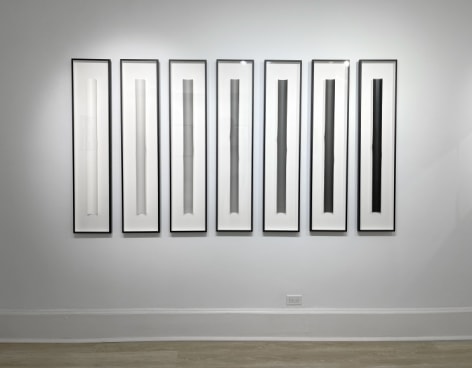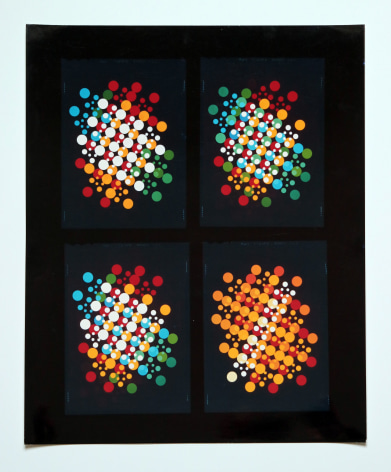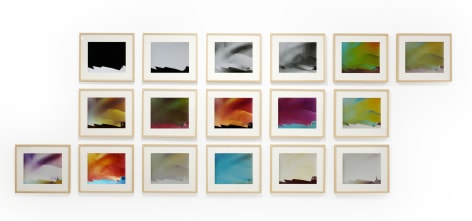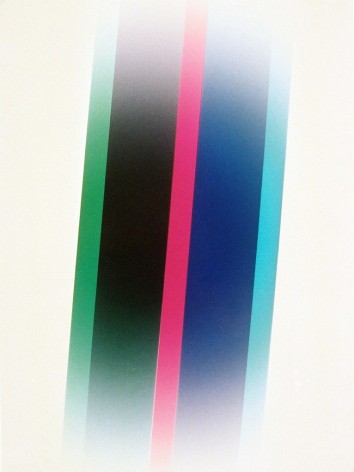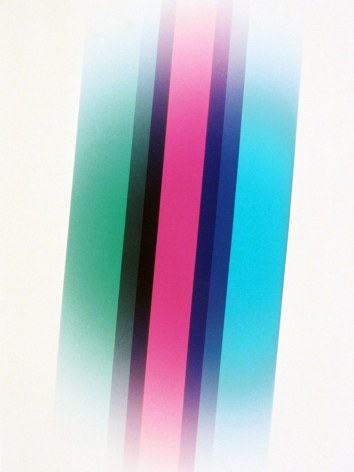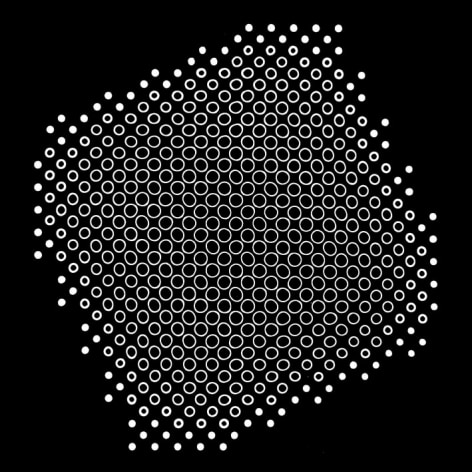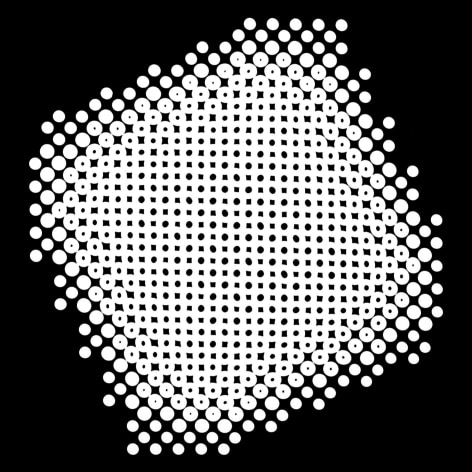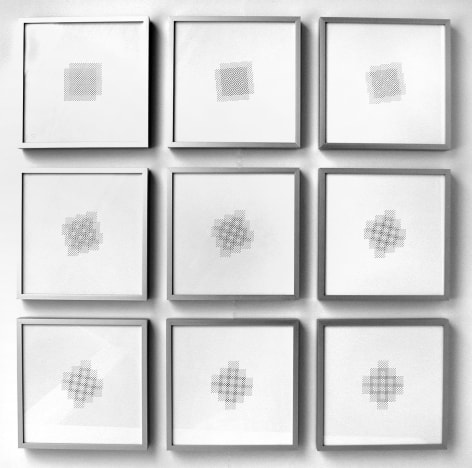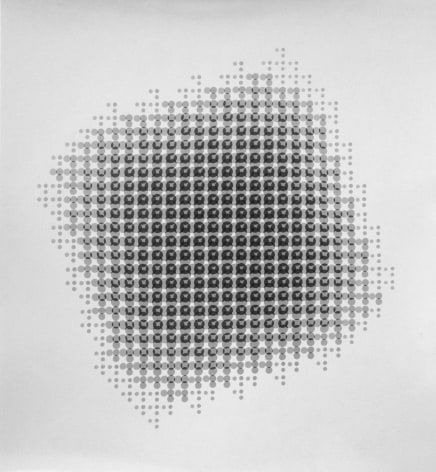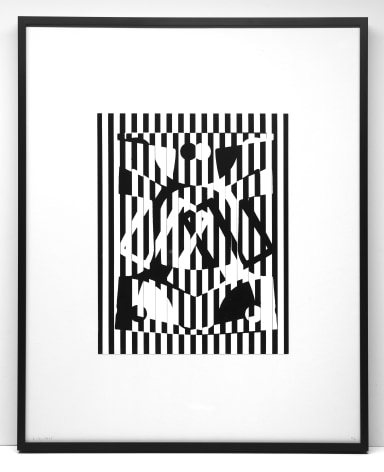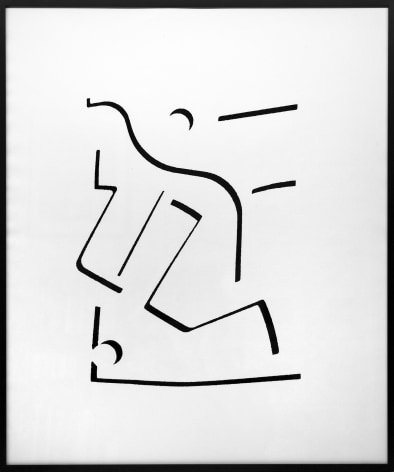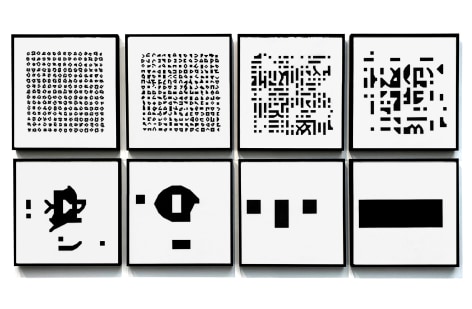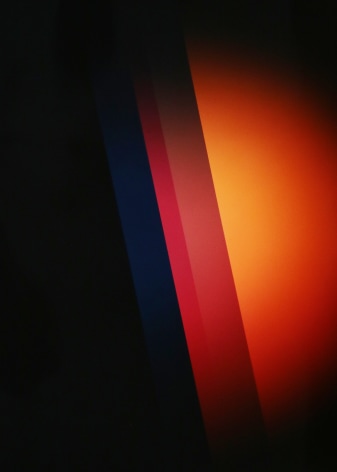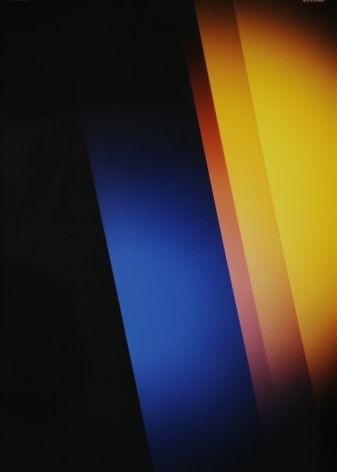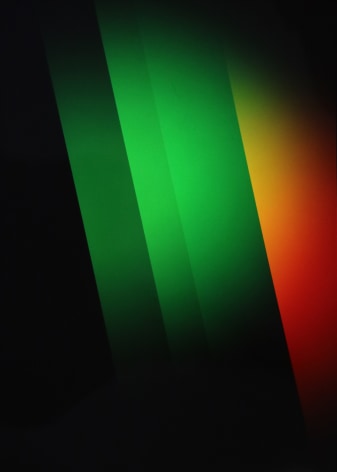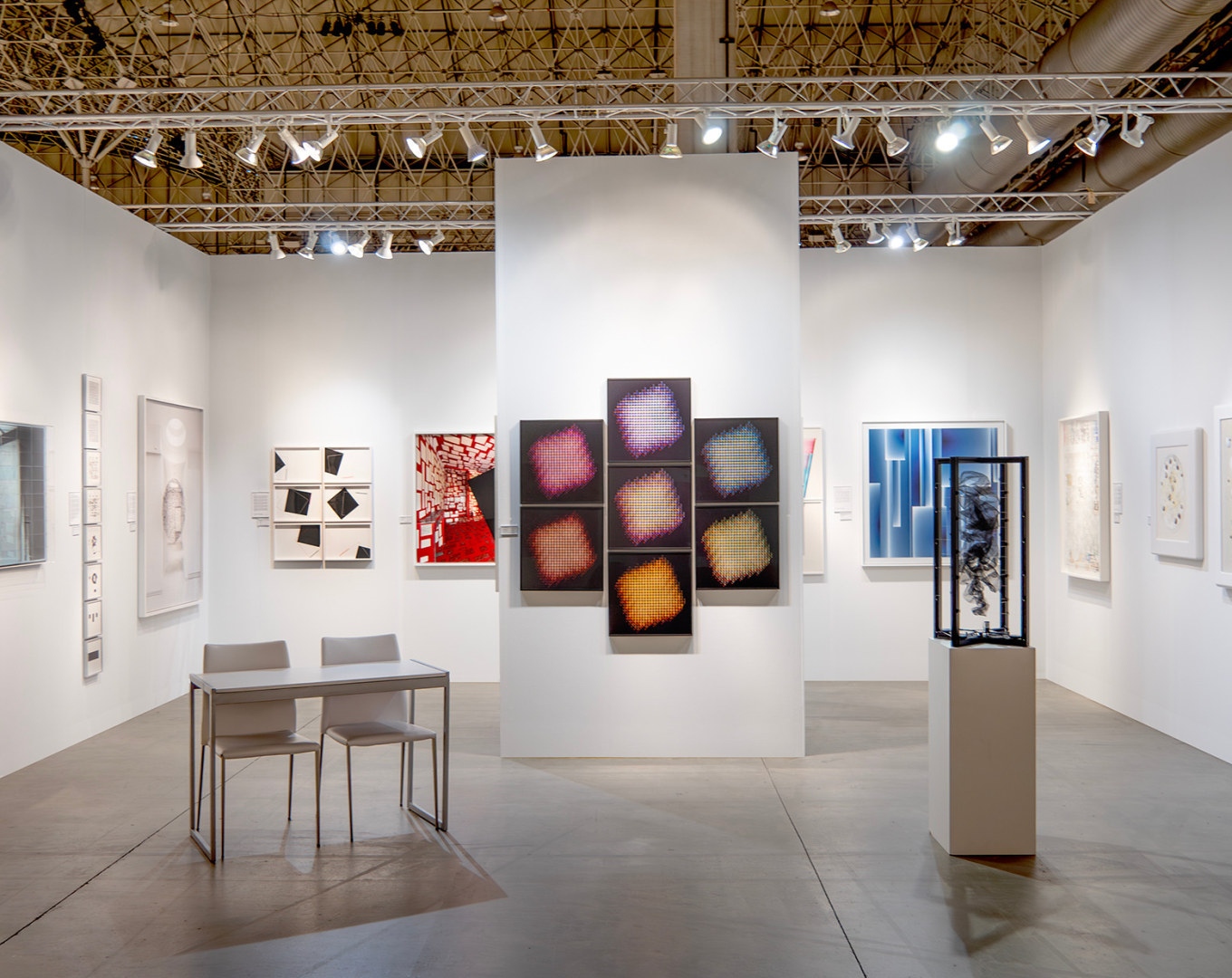
To Jäger, photography is not a reproductive process but a productive system. While pushing the boundaries of the medium in an almost performative manner, Jäger creates abstract geometric shapes representative of the techniques used. In 1968, Jäger developed the idea of Generative Photography, which in his words consists of “finding a new world inside the camera and trying to bring it out with a methodical, analytical system.” Jäger’s generative color work derives from the color spectrum and the refraction of white light. Whether analogical or digital, the work is not a representation of color but a reflection of it.
Jäger has been part of some of the most iconic computer art exhibitions of the 1960s, such as New Tendencies (1969) in Zagreb, Experiments in Art and Technology (1968) at the Brooklyn Museum in New York and the groundbreaking Generative Fotografie (1968) at the Kunsthaus Bielefeld in Germany. Gottfried Jäger’s work is currently featured in a major group exhibition at the Tate Modern in London, Shape of Light: 100 Years of Photography and Abstract Art until October 2018.
Gottfried Jäger’s work is held in the permanent collections of the George Eastman House, Rochester; the Sprengel Museum, Hannover; the Museum Ludwig, Cologne; the Ruppert Collection, Museum Würzburg; the Museum Folkwang, Essen; the Fotomuseum im Münchner Stadtmuseum, Munich; the Museum für Kunst und Gewerbe, Hamburg; and the Bibliothèque Nationale, Paris. Centre Georges Pompidou and in several private collection in United States.
Gottfried Jäger (b. 1937, Burg) currently lives and works in Germany, where since 2002 he has served as the photography advisor for the Peter C. Ruppert Concrete Art Collection at the Museum Kulturspeicher Wurzburg.

